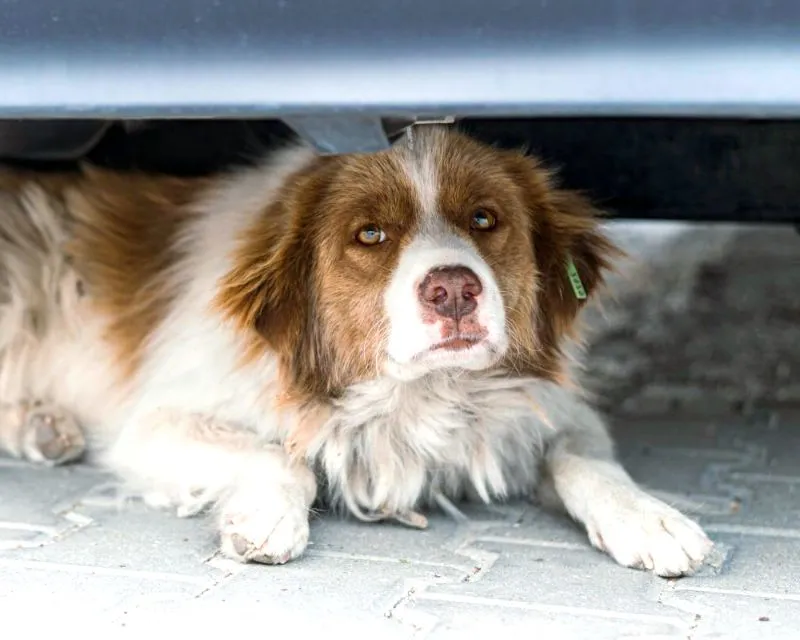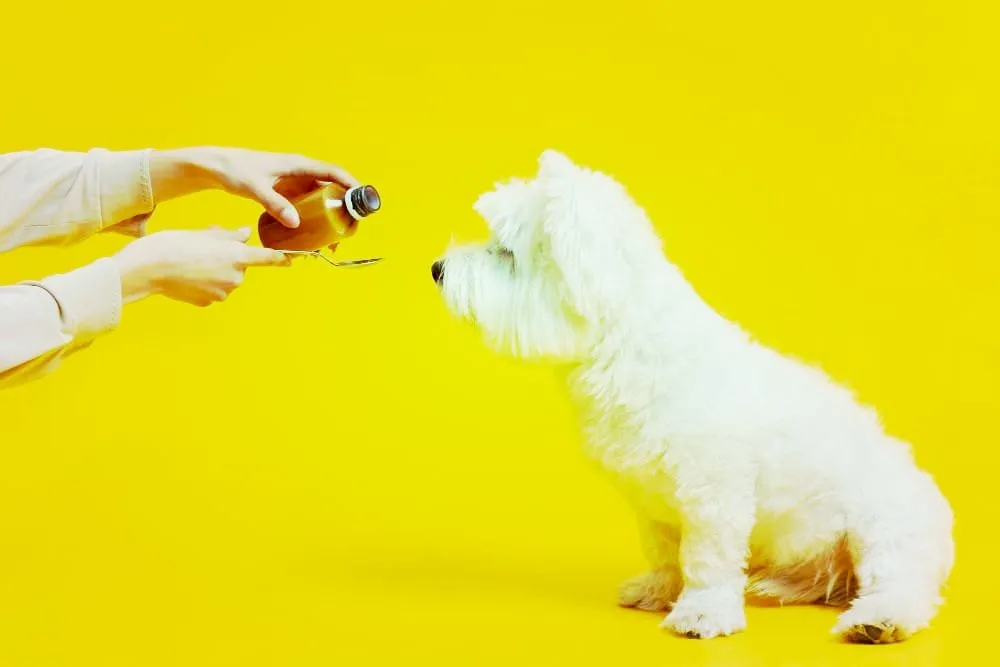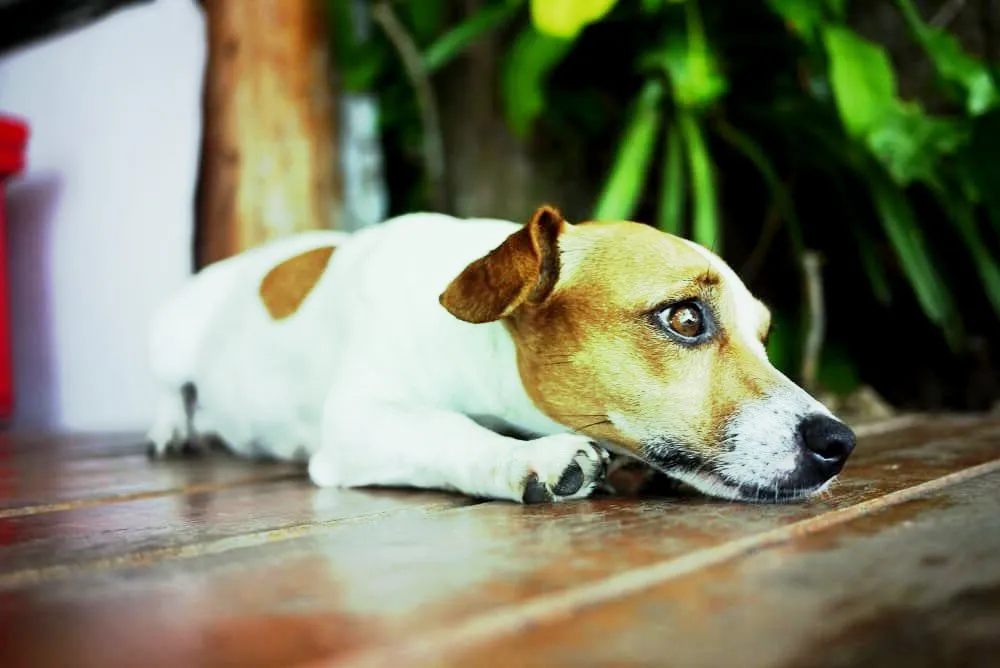
Common dog fears and phobias affect many dogs and can cause significant distress and anxiety for both the dog and their owner.
Dogs can develop fears and phobias for a variety of reasons, including past traumatic experiences, lack of socialization, or genetic predisposition.
Dogs frequently have phobias and concerns related to pyrotechnics, thunderstorms, loud noises, strangers, and being left alone. These anxieties may show themselves as shaking, hiding, barking excessively, panting, or acting destructively.
Understanding and addressing these fears and phobias is essential for improving the well-being and quality of life for fearful dogs.
Providing a safe and secure environment, gradual desensitization, positive reinforcement training, and professional help can all play a role in helping dogs overcome their fears and phobias.
Fear Vs. Phobia
Fear and phobias are common among dogs, just like humans. While fear is a normal emotion, a phobia is an intense and irrational fear that can disrupt a dog’s daily life.
Understanding the difference between fear and phobia is crucial when it comes to helping our furry friends.
Fear is a natural response to a specific stimulus or situation, like thunderstorms or fireworks, while a phobia is an exaggerated and uncontrollable reaction to the same situation.
Dogs with phobias may exhibit extreme behaviors such as hiding, trembling, or even aggression.
Identifying these fears and phobias is the first step in helping our dogs overcome them. By recognizing their triggers and gradually exposing them to controlled and positive experiences, we can help them build new associations and conquer their fears.
Whether it’s through desensitization techniques or seeking professional help, it’s important to remember that our dogs rely on us to provide a safe and understanding environment.
By addressing their fears and phobias, we can ensure that our four-legged companions lead happy and stress-free lives.
Sound Or Noise Phobias In Dogs
Fear of sound or noise is a common phobia among dogs. Some dogs become anxious or scared when they hear loud noises such as thunderstorms, fireworks, or even the vacuum cleaner.
Sound phobias can cause distress and anxiety in dogs, leading to destructive behavior or attempts to escape.
It is important to understand that dogs have sensitive hearing, and certain sounds can trigger a fear response. Dogs may show signs of fear such as trembling, panting, pacing, or hiding when they encounter loud noises.
To help dogs overcome their sound phobias, it is essential to create a safe and calm environment.
This can be achieved by providing a den-like space where the dog feels secure, using white noise or calming music to drown out loud sounds, and gradually desensitizing the dog to the fearful noises through counter-conditioning techniques.
Seeking professional help from a veterinarian or animal behaviorist can also be beneficial in managing and treating sound phobias in dogs.
Fear Of Strangers
Fear of Strangers is a common dog fear that can be triggered by various factors. Dogs may become apprehensive or anxious when encountering unfamiliar people, often displaying signs of fear such as trembling, barking, or hiding behind their owner.
This fear could stem from a lack of socialization during the critical period of puppyhood or from a negative experience with a stranger in the past.
It is crucial for dog owners to address this fear early on by gradually exposing their furry friends to different people in controlled and positive situations.
Implementing counterconditioning techniques, such as rewarding calm and relaxed behavior around strangers, can help alleviate the fear.
Patience, consistency, and the support of a professional dog trainer or behaviorist are often necessary to help dogs overcome this fear and regain their confidence when encountering new individuals.
Understanding and addressing the fear of strangers is an important step in ensuring the overall well-being and happiness of our beloved canine companions.
Fear Of Unknown Persons
Fear of Unknown Persons: Dogs are known for their loyalty and social nature, but some can develop a fear of unknown persons.
This kind of fear can be a result of various factors, such as previous traumatic experiences or insufficient socialization during their early years.
Dogs exhibiting this fear may display signs of aggression, hiding, or excessive barking. It is essential for dog owners to understand that this fear is based on their pet’s perceived threat and not to dismiss it as mere disobedience.
To help them overcome this fear, gradual exposure to new people in controlled environments can prove beneficial.
Positive reinforcement and reward-based training methods can also be employed to instill confidence and trust in the dog.
By consistently working on socialization and providing a safe and secure environment, owners can help their dogs overcome their fear of unknown persons and lead a happy and well-adjusted life.
Fear Of The Veterinarian
Fear of the Veterinarian For many dogs, the fear of going to the veterinarian is a common anxiety. The unfamiliar smells and sounds, along with the thought of being poked and prodded, can be overwhelming for our furry friends. This fear can stem from past negative experiences, such as painful procedures or vaccinations.
Additionally, dogs are highly intuitive creatures and can pick up on their owners’ anxieties, causing them to feel stressed as well.
To help alleviate this fear, it’s crucial to introduce positive associations with the veterinarian from a young age. Regular, non-medical visits to the clinic, where the dog receives treats and praise, can create a positive connection.
Gradually, the dog can become desensitized to the veterinary setting, making future visits less stressful.
Additionally, using calming techniques such as gentle touch, soft music, or anxiety-reducing supplements can further help dogs overcome their fear of the veterinarian and ensure they receive the necessary medical care they need.
Fear Of Car Rides
Fear of Car Rides Fear of car rides is a common fear among dogs and can cause distress for both the pet and the owner. This fear often stems from negative past experiences, such as a traumatic car accident or motion sickness.
Dogs with fear of car rides may exhibit signs of anxiety, including panting, drooling, trembling, and even vomiting. To help your furry friend overcome this fear, it is important to gradually desensitize them to car rides.
Start by allowing them to explore the car while it is stationary, rewarding them with treats and praise.
Once they are comfortable with this, you can try taking short rides around the block, gradually increasing the duration and distance.
It is also beneficial to create a positive association with car rides by providing comfort items, such as their favorite blanket or toy.
With patience and positive reinforcement, you can help your dog conquer their fear of car rides and ensure a more enjoyable travel experience for everyone involved.
Fear Of Other Dogs
Dogs can exhibit a fear of other dogs, which can be a result of various factors such as lack of socialization or a negative past experience. This fear can manifest in different ways, including avoidance, aggression, or excessive barking and lunging.
It is important for dog owners to understand and address this fear to ensure the well-being of their furry friends and promote a harmonious coexistence with other dogs.
Professional help, such as working with a certified dog trainer or behaviorist, can be beneficial in identifying the underlying causes of the fear and implementing appropriate training techniques.
Gradual exposure to other dogs in controlled environments can also help desensitize dogs to their fear. Patience, consistency, and positive reinforcement are key in successfully managing and overcoming a dog’s fear of other dogs. By understanding and addressing this fear, dog owners can help their pets live a happier and more confident life.
Fear Of Children
Common Dog Fears And Phobias Fear of Children Dogs can develop a fear or phobia of children, often due to negative experiences or lack of exposure during their critical socialization period.
Dogs may exhibit signs of fear, such as retreating, hiding, or becoming aggressive when around children.
This fear can stem from loud noises, sudden movements, or unpredictable behavior typically associated with young kids. When introducing a dog to children, it is crucial to proceed with caution and prioritize safety for both the child and the dog.
Gradual desensitization and positive reinforcement training can help dogs overcome their fear and become comfortable around children.
Providing a calm, controlled environment during these interactions is essential. It’s important for parents and dog owners to educate children about proper behavior around dogs and teach them how to approach and interact with them respectfully.
By addressing the fear of children, dogs can learn to become more relaxed and confident in their presence.
A Final Word On Fears and Phobias In Dogs
Understanding and addressing common dog fears and phobias is essential for their well-being. By recognizing the signs and offering appropriate support, we can help our furry friends overcome their anxieties and live happier lives.
Remember, patience, positive reinforcement, and seeking professional help if needed, can make a significant difference in managing and alleviating their fears.
Together, we can create a safe and comfortable environment for our beloved pets.








